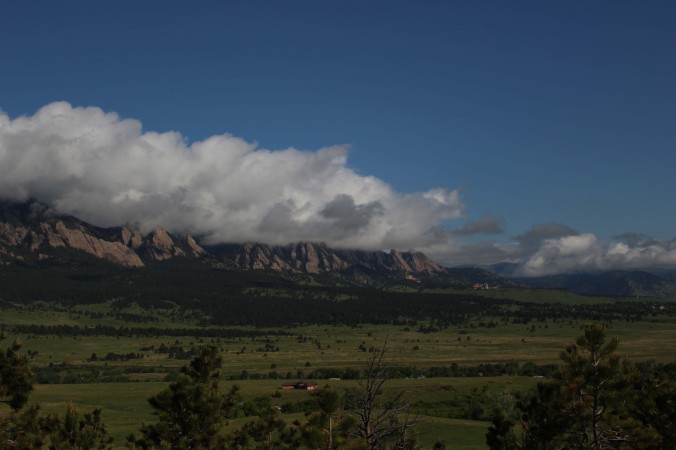Between 70 and 100 million years ago, much of central North America was covered in a shallow, inland sea known as the Western Interior Cretaceous Seaway. While the ancestors of Tyrannosaurus and Triceratops roamed the fragmented continent, an amazing array of fascinating marine reptiles prowled through the waves. Sea turtles the size of a small car, long-necked plesiosaurs, and fifty foot long relatives of the Komodo dragon. Check out the documentary by clicking on the link below!
The first stop in the documentary is to visit Dinosaur Ridge, a very exciting fossil site just a few minutes drive from where I live in Colorado. Dinosaur Ridge has a number of very interesting points of geological and paleontological interest, but the portion of the ridge that we visit in the documentary are the fossil dinosaur trackways on the eastern side of the ridge. Here, just before the area was completely inundated by the seaway, a number of different dinosaurs (paleontologists believe some sort of large, iguanodont-like ornithopod; an ostrich-like ornithomimosaur; and a large Acrocanthosaurus-like theropod) left their footprints in the once-squishy beach sand. In other, nearby rock layers, we can find the remains of lithified ripple marks, showing exactly where the waves would lap gently at the shore.
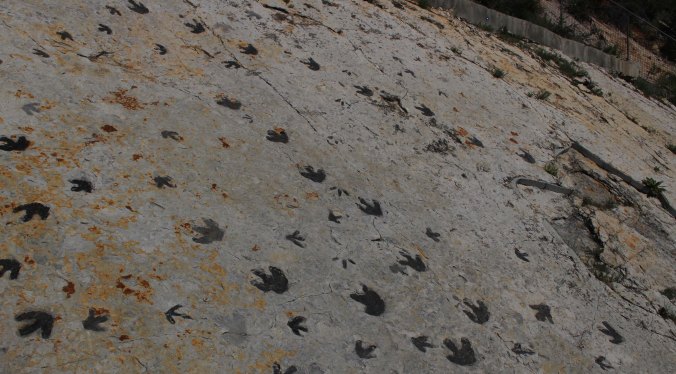
Fossil dinosaur trackways preserved at Dinosaur Ridge in Morrison, Colorado. The majority of the footprints are thought to belong to some sort of ornithopod dinosaur like the famous Iguanodon, although some are attributed to an ornithomimosaur, and others to a large, Acrocanthosaurus-like theropod. Crocodilian tracks are also reported.
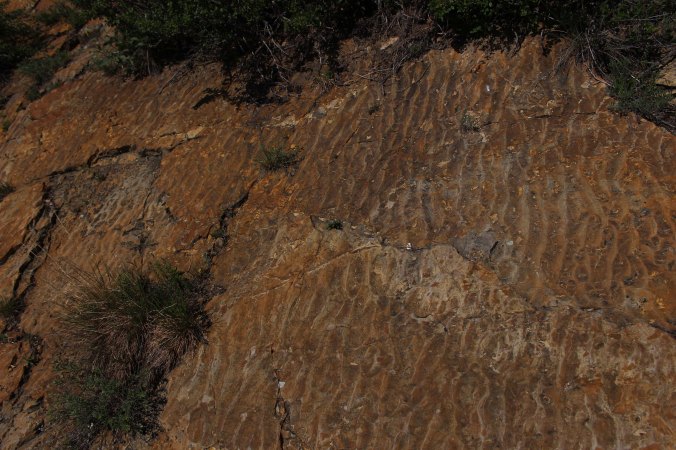
Petrified ripple marks from the shore of the ancient Western Interior Cretaceous Seaway, preserved at Dinosaur Ridge.
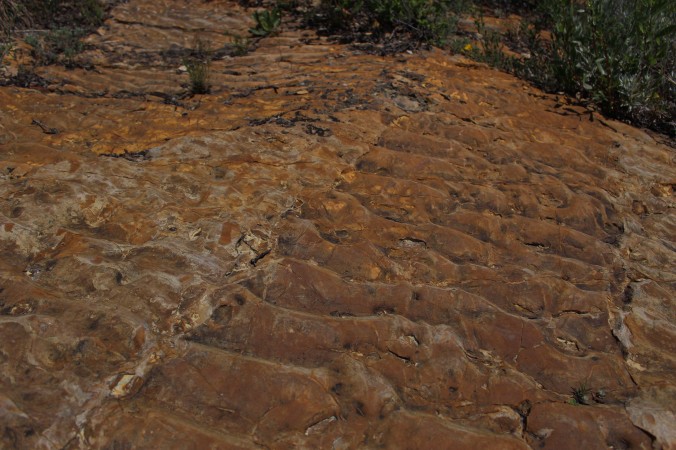
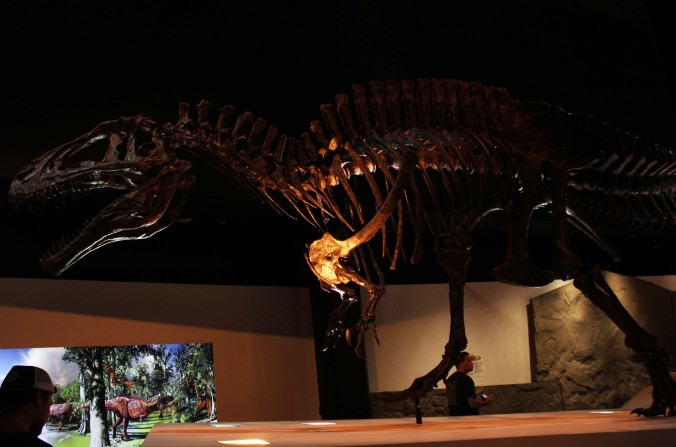
A mounted skeleton of the theropod dinosaur Acrocanthosaurus, on display at the Houston Museum of Natural Science in Texas. This dinosaur gets its name from the enormous, elongate neural spines running down its back, which would have made the animal look much larger and more intimidating than a relative without them.
Next, I visited Doug Hartshorn, the Museum Coordinator at the Morrison Natural History Museum, so that he could tell us more about some of the Western Interior Seaway’s inhabitants. He told us about the mosasaurs, such as Tylosaurus, and the Pteranodon, a species of pterosaur, a group of winged reptiles that were closely related to dinosaurs.
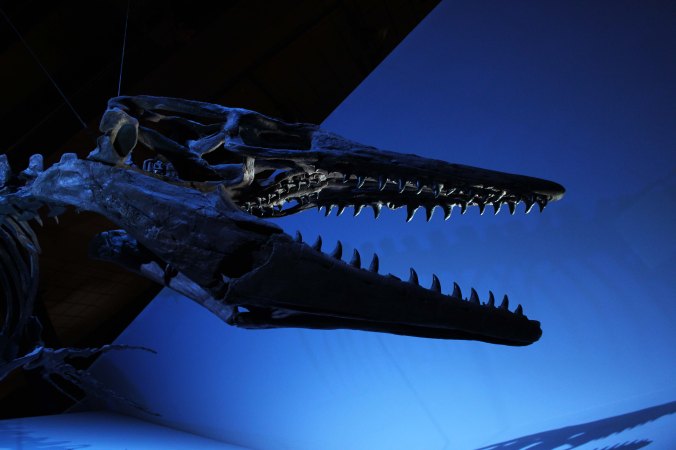
Mounted skeleton of the mosasaur Tylosaurus on display at the Houston Museum of Natural Science in Texas. Tylosaurus and the other mosasaurs were not dinosaurs, and in fact were close cousins of modern day monitor lizards, such as the Komodo dragon (Varanus komodoensis). In this shot, you have an excellent view of the pterygoid teeth, situated on the roof of the mouth of the animal. These twin rows of teeth could be used like a conveyor belt, to pull prey back into the belly of the beast.
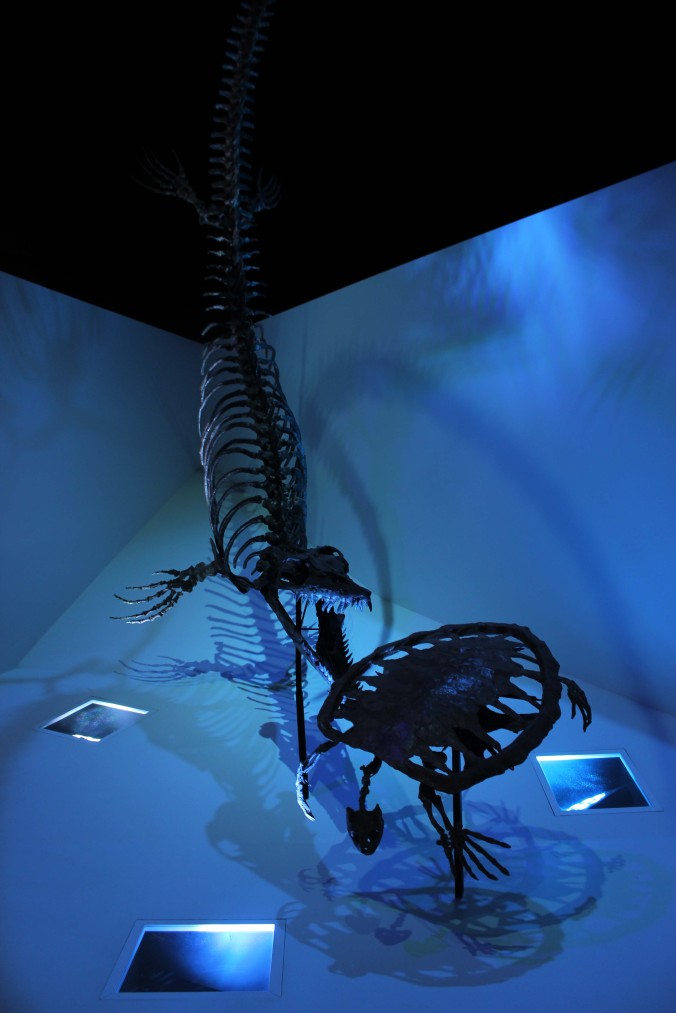
Mounted skeletons of the sea turtle Toxochelys and the mosasaur Plioplatecarpus, on display at the Houston Museum of Natural Science in Texas. Toxochelys, the most common sea turtle in the Western Interior Seaway, had evolved a bite that was perfectly adapted to consume hard-bodied prey, such as clams and ammonites.
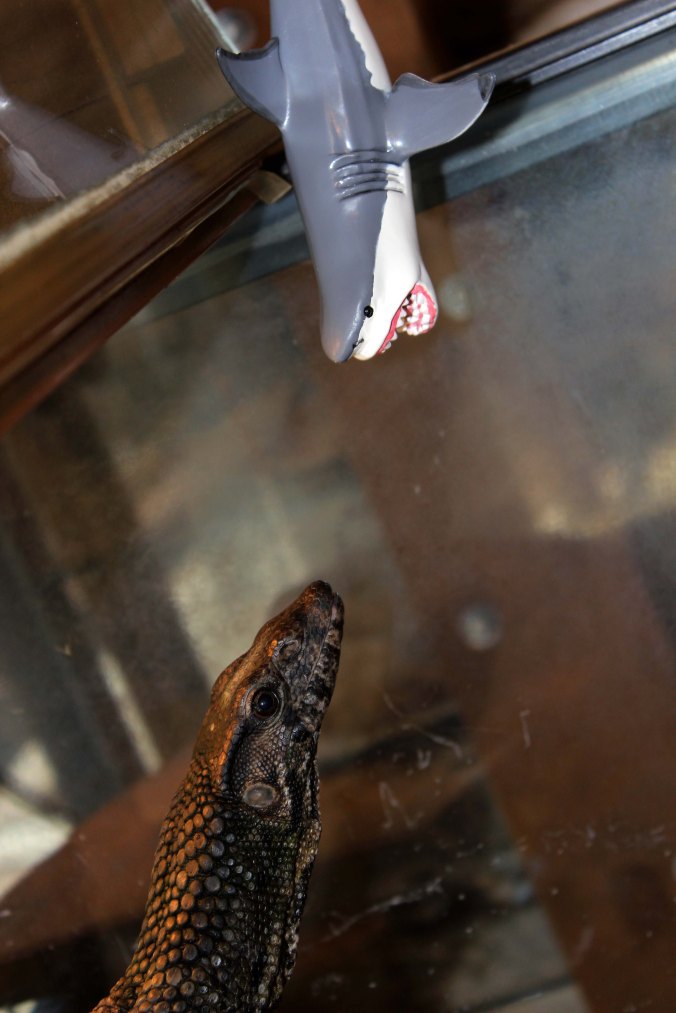
Herkimer, the Dumeril’s monitor lizard (Varanus dumerilii) at the Morrison Museum attacks a plastic shark as he reenacts his favorite scene from Jurassic World. Herkimer, like all monitor lizards, is a close relative of the mosasaurs. The white dot on top of Herkimer’s head (just a little bit behind his eyes) is actually a third eye known as the pineal eye, something that we see on the skull of mosasaurs, as well.
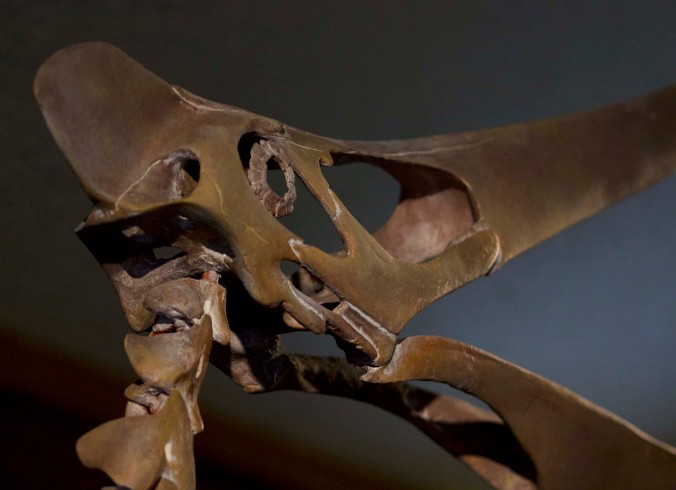
Mounted skeleton of a Pteranodon, on display at the Morrison Museum. Pteranodon is one of a group of flying reptiles called pterosaurs, closely related to dinosaurs and crocodilians. There appear to be two different morphs of Pteranodon, those with a small crest on their head like that featured here, and those with larger crests, as in the photograph below. In a classic case of sexual dimorphism, many paleontologists suspect the small-crest morph to be female, and the large-crest morph to be the male.
After speaking with Doug for a bit, we briefly look at a few other animals that lived in the seaway. I’ve included those images here, as well as several more fascinating creatures that I didn’t get the chance to cover in the documentary.
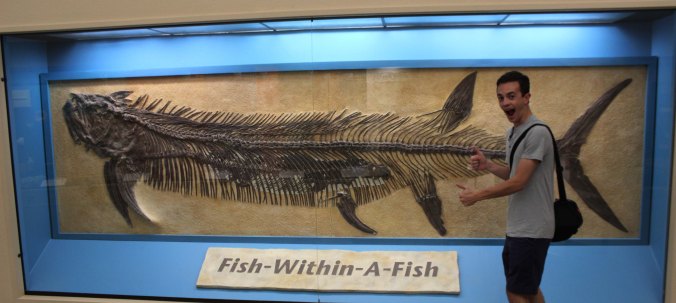
The famous “Fish-within-a-fish” Inception fossil, on display at the Sternberg Museum of Natural History in Kansas. It appears that the larger fish, Xiphactinus, died shortly after ingesting a smaller species of fish, Gillicus. Photo Credit: Mark Neher
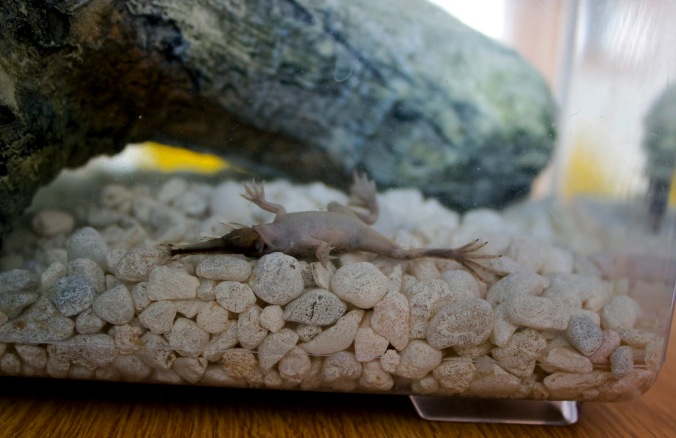
Although I always thought it a bit hard to swallow that the Xiphactinus choked to death on prey that was simply too large for it, a startling encounter with my pet African dwarf clawed frog (Hymenochirus sp.) a few years ago changed that. Apparently, it had decide that going after the algae eater in the tank was a good idea, despite the fact that the algae eater was much larger than it could reasonably expect to handle!
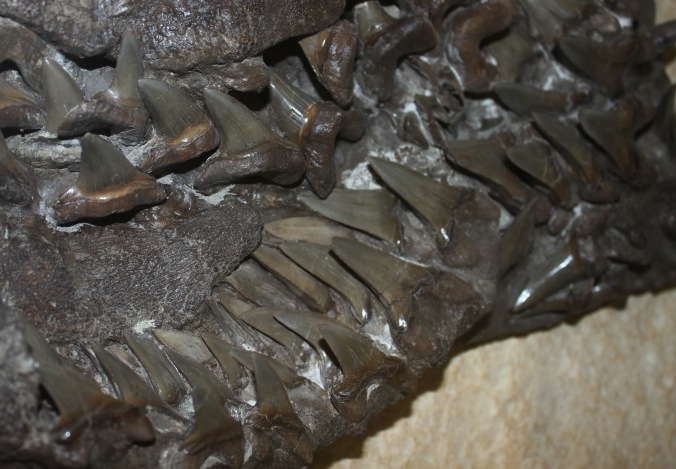
The teeth of the prehistoric shark Cretoxyrhina on display at the Sternberg Museum in Kansas. This shark is thought to resemble the modern great white shark (Carcharodon carcharias) in size and general shape.
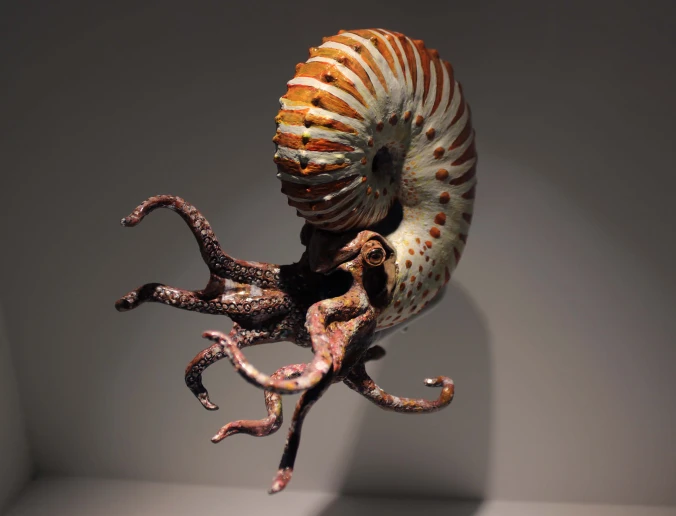
This is a model of the ammonite Jeletzkytes on display at the Houston Museum. This ammonite genus was one of many that inhabited the Western Interior Seaway. Although ammonites resemble the modern genus Nautilus, they are only distantly related to one another.
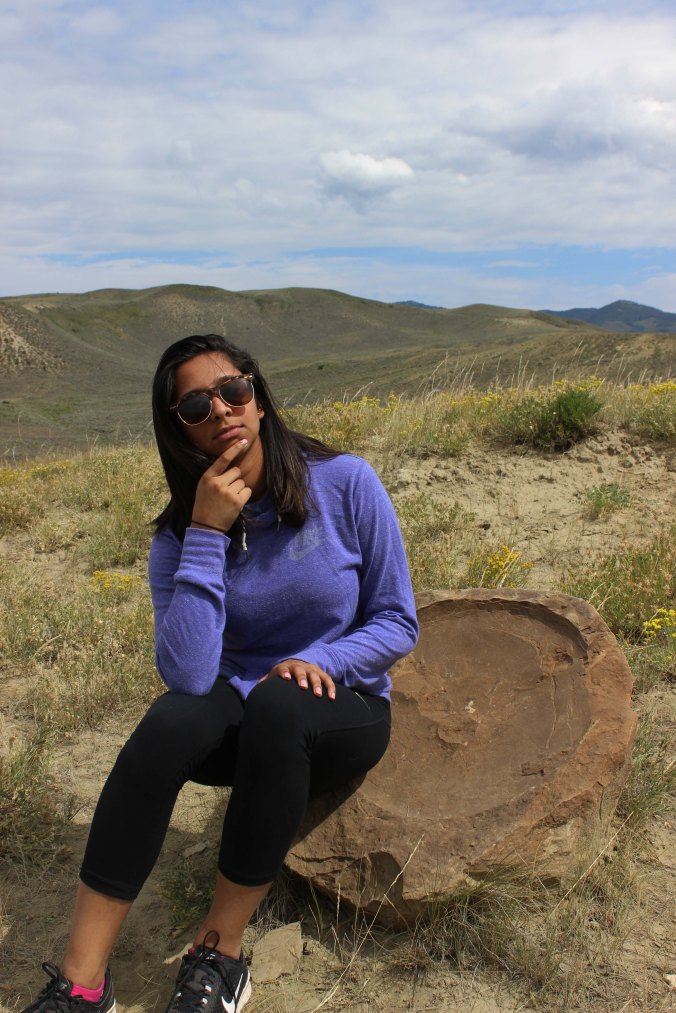
Mona Kamath sitting on a specimen of Placenticeras meeki in the field at the Kremmling Cretaceous Ammonite Locality. Placenticeras is a giant genus of ammonite, and are fairly abundant at the site. To learn more about KCAL, check out this post from the The Natural World Archives, by guest blogger Wayne Itano.
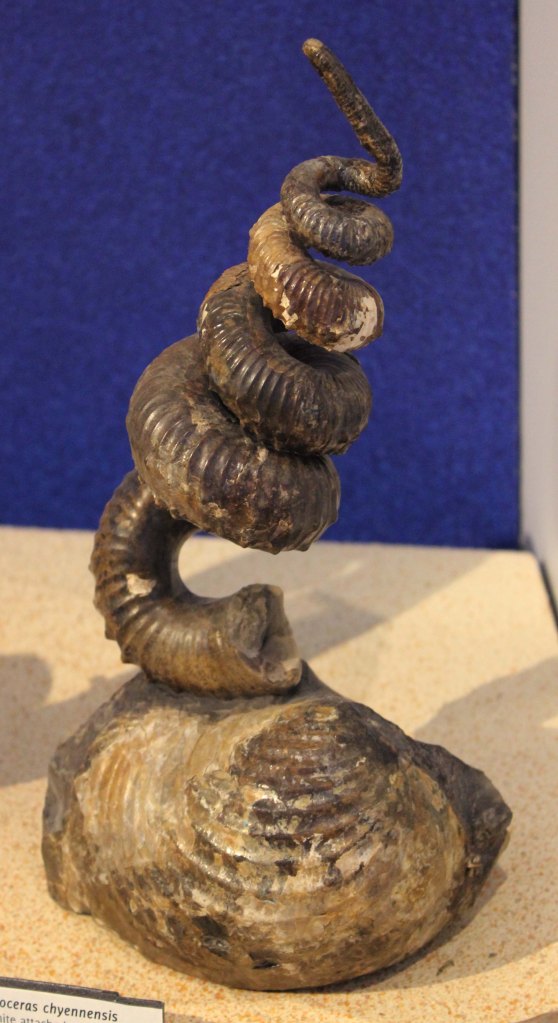
The bizarre fossil shell of the ammonite species Didymoceras cheyennensis, attached to a specimen of the fossil clam Inoceramus simpsoni, on display at the Mace Brown Museum of Natural History in South Carolina. In my opinion, Didymoceras is one of the most ridiculous and impractical animals that I can imagine.
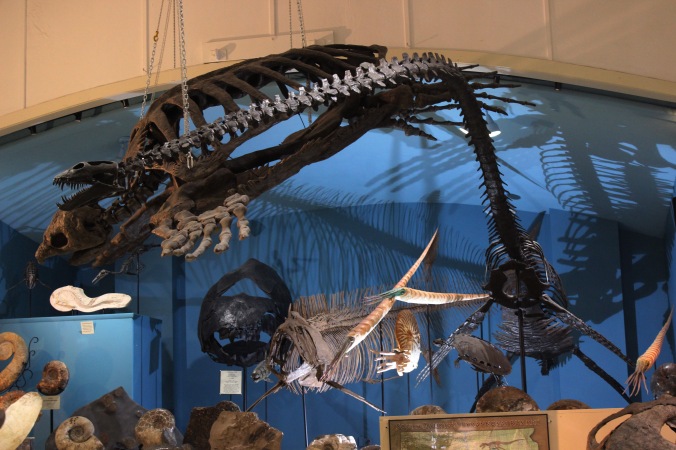
Mounted skeletons of the giant sea turtle Archelon ischyros, the long-necked plesiosaur Elasmosaurus, and an assortment of other extinct sea monsters on display at the Black Hills Institute of Geological Research, Inc. in South Dakota.
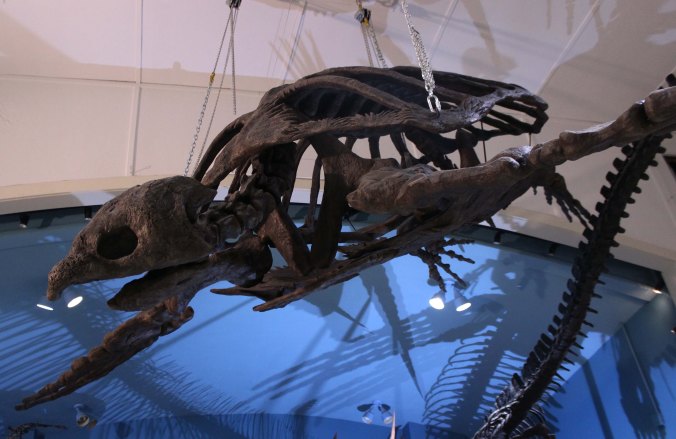
A closer shot of the enormous car-sized sea turtle Archelon ischyros. Archelon is the largest species of sea turtle ever discovered, and is thought to be fairly closely related to the modern leatherback sea turtle (Dermochelys coriacea).
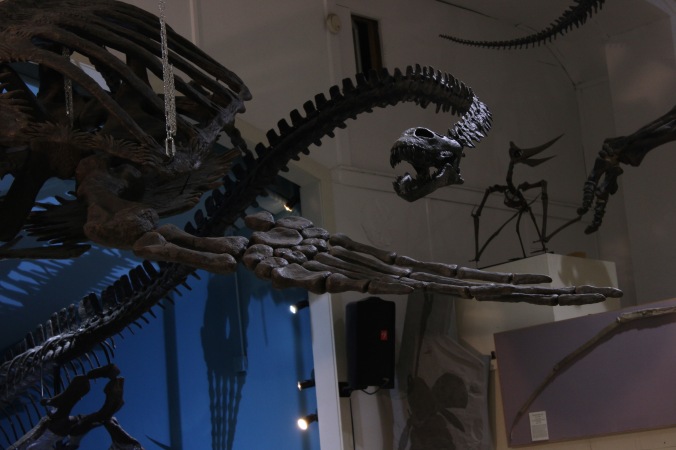
The enormous and ridiculously elongate neck of the plesiosaur Elasmosaurus. Reminiscent of the terrestrial sauropods, the heads of these creatures look almost comically small at the end of their necks, the length of which could vary considerably between different genera.
Despite the mountains and the mile-high elevation that we see today, it is always a startling reminder to come across a fossil seashell or shark tooth while out hiking and enjoying the Colorado outdoors.
